The Kobe Steel Group makes groupwide efforts to comply with laws and regulations, implement measures to guard against equipment accidents, and prepare for natural disasters through such means as establishing disaster management systems and holding regular training exercises. These measures are actively pursued to prevent accidents from occurring and to minimize damage if a disaster does strike.
We will continue to raise each and every employee's awareness for disaster preparedness while continuing to carry out disaster prevention activities on a groupwide basis.

At the Kobe Steel Group, the head office, business units, business locations, and Group companies all implement disaster prevention management activities under the supervision of the president and the director responsible for companywide disaster prevention.
Companywide Disaster Prevention Management Structure
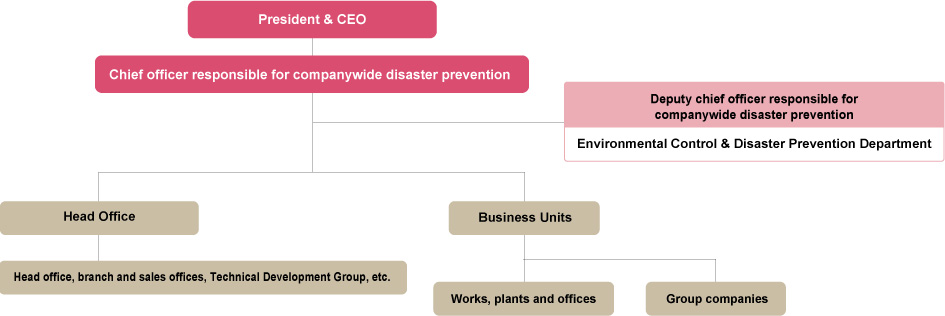
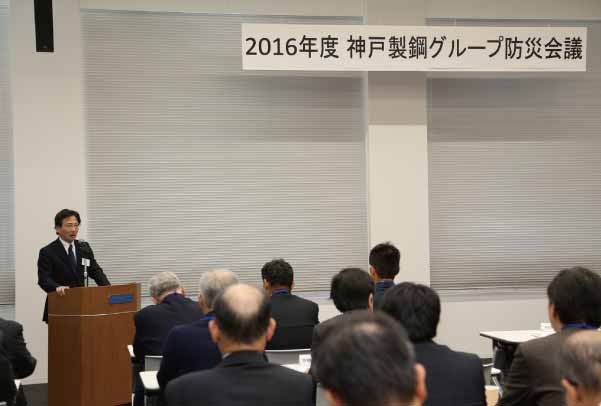
We organize the Kobe Steel Group Disaster Prevention Meeting every year in an effort to share information and strengthen disaster prevention initiatives. A total of 130 employees from 51 Group companies took part in our fiscal 2016 meeting. In addition to information on topics such as mid-term disaster planning, communication protocols and planning of disaster readiness inspections, we also shared examples of problems that arose throughout the Group.
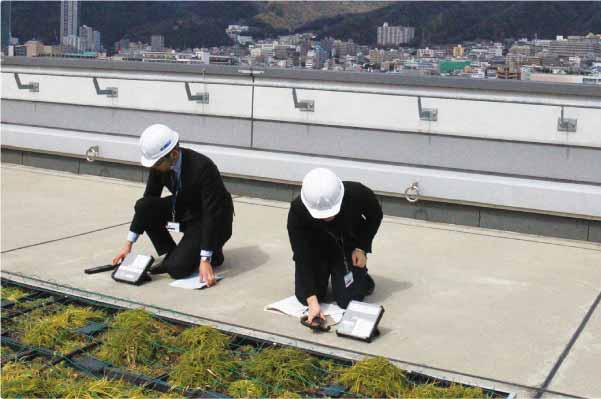
Use of satellite phones
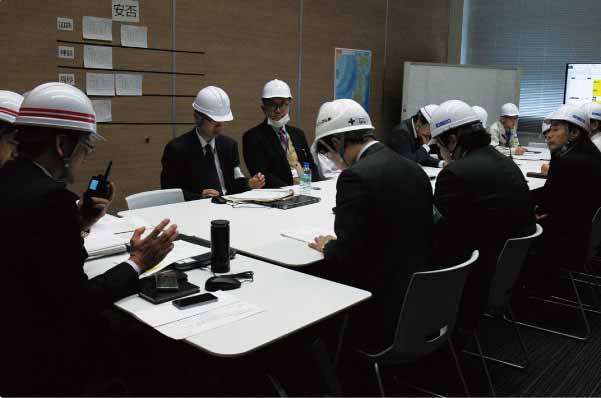
In the event of a large-scale earthquake or other natural disaster or accident, we will set up a disaster response headquarters at our Tokyo Head Office or Kobe Head Office to coordinate relief efforts and restoration activities.
On March 10, 2017, we carried out drills into establishing a disaster management headquarters in preparation for the possibility of a major earthquake in the Nankai Trough. The drills focused on utilizing satellite and IP phones, in the event of a communication networks breakdown, to collect information and communicate between the Tokyo and Kobe head offices.
In order to be prepared in the event of an emergency, we will continue training in the future to ensure even smoother responses.
Disaster Response Headquarters Organization

The Kobe Steel Group makes every effort to prevent fires and other accidents before they occur. In fiscal 2016 two accidents occurred at Kobe Steel locations and one accident occurred at a Group company. We have investigated the causes of all accidents and taken appropriate action.
In the future, we will carry out extensive efforts to eliminate facility accidents throughout the Kobe Steel Group, including sharing information on accidents occurring within and outside the company and coordinating with voluntary action plans from industrial associations.
Accidents at Kobe Steel Locations in Fiscal 2016
| Date and Location | Incident |
|---|---|
| April 2016
Kakogawa Works |
The reclaimer boom conveyor belt in the raw material yard came into contact with the frame, causing a fire |
| June 2016
Takasago Works |
Blockage in a ventilation port of a plastic tank for a sand casting mold led to deformation during pouring |
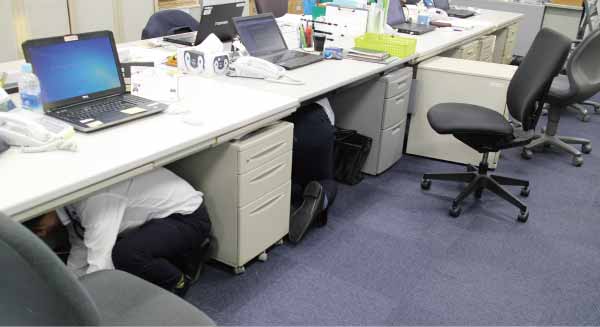
We conduct regular emergency drills at each of the Kobe Steel Group's business locations including works, plants and offices.
On January 17 we held "Shakeout Training" at the Kobe Head Office. At each of our other locations we also carried out training to educate employees on the importance of first attending to their own personal safety in the event of an earthquake.
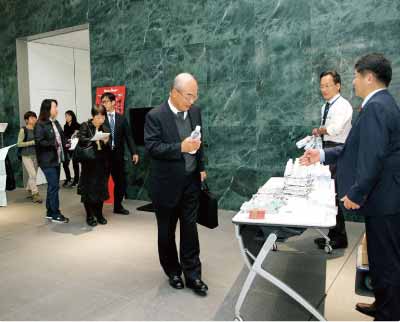
Drill to practice returning home (Kobe Head Office)
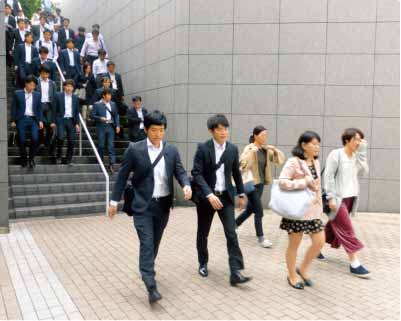
In the event of a major earthquake or other large-scale disaster, public transportation will likely become unavailable. We held drills at five locations throughout the Company, for employees to practice returning home during such an event.
In November 2016, 223 employees participated at the Kobe Head Office and in October, 121 employees participated at the Tokyo Head Office, travelling to distances 6 to 9 kilometers away, while noting the location of convenience stores, public toilets and other points of interest.
Practicing return routes in advance ensures that employees are prepared to do so under pressure in the event of an emergency.
We hold on-site disaster prevention inspections of Kobe Steel Group facilities in order to verify issues related to disaster prevention laws and regulations, and to minimize risks that could potentially lead to accidents.
No significant violations were found during inspections at Kobe Steel locations and Group companies in fiscal 2016.
Going forward, we will continue to reinforce disaster prevention management systems throughout the Kobe Steel Group.
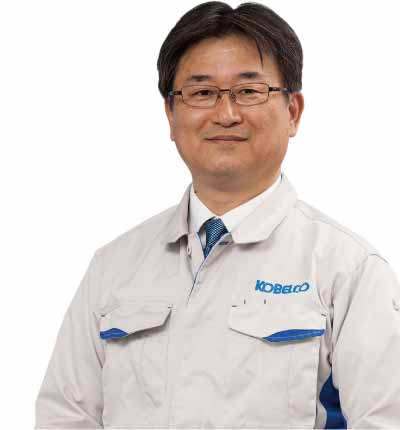
We engage in disaster preparedness activities, with the aim of becoming a corporate group that is trusted by the community.
At the Kobe Steel Group, disaster prevention activities are carried out according to three basic principles: prevention of facility accidents, strengthening preparations for natural disaster, and compliance with disaster-related laws and regulations.
For accident prevention, we implemented activities to reduce risks related to accidents, aiming for thorough countermeasures against reoccurrence of accidents and to share knowledge of case studies.
Regarding large-scale earthquake response and other disaster preparedness, we implemented both prevention and mitigation initiatives that include hard countermeasures and training, in anticipation to collapse, flooding and other risks.
In the future as well, we will steadily implement all activities, striving to live up to our ideals as a corporate Group that is strong against disaster and deserving of the trust of our local communities and clients.